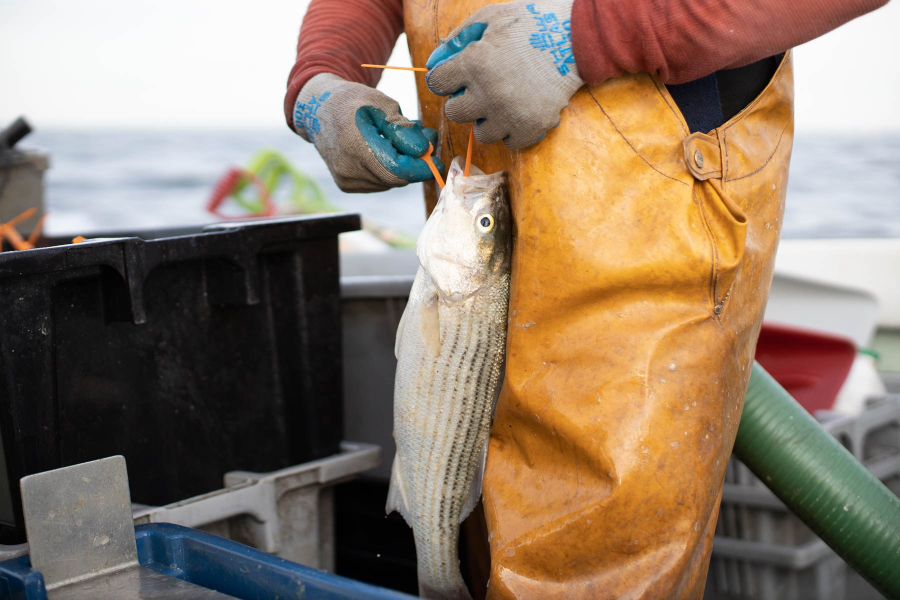New report investigates how the Bay's forage base is changing over time
Bay Program partners release Forage Status and Trends Report

The Chesapeake Bay provides many important resources for species that live here: places to spawn, nursery grounds and things to eat. The Bay’s predator species, like striped bass and summer flounder, depend on having enough forage—all the living things they eat—to thrive. Having enough forage available is key not only to the predators that eat this prey, but to humans as well, because species like striped bass and summer flounder are both ecologically and economically important.
Forage includes some fish species, like bay anchovy and juvenile weakfish, spot and croaker, as well as other animals, like polychaetes, mysids, amphipods and isopods, mantis and sand shrimp, and razor and macoma clams.
With many environmental changes occuring in the Bay, the Chesapeake Bay Program’s Forage Action Team recently explored the questions: How is the Chesapeake Bay forage base changing over time, and is there enough food available for key predators? They published their findings in the Forage Status and Trends Report for the Chesapeake Bay.
Forage abundance can naturally fluctuate a great deal from year to year. But researchers did identify a few interesting findings.
Juvenile populations of forage fish have been relatively low since the 2000s compared to historic estimates.
The biomass of benthic invertebrates—their total weight—held steady or perhaps increased slightly over time. That increase is driven mostly by an increase in polychaetes, while mysids have declined.
Atlantic menhaden and bay anchovy have become a more important part of predators’ diets over time.
Juvenile striped bass in tidal freshwater areas of the Bay eat insects to fill nearly 20% of their diet.
Effects of climate change—like rising temperatures and more frequent and intense storms—will affect different forage species in different ways. While many species will face new challenges, others will benefit from these changes.

Why are these changes happening? Forage species have different habitat and environmental needs that scientists are working to understand. For example, polychaetes and bay anchovies are affected by water column conditions. These populations grow in years when water temperatures warm quickly in the late winter/early spring and when precipitation levels are high—conditions we expect to see more of with climate change. But scientists still have much to learn. For example, the effects of climate change on some important forage species, like Atlantic menhaden and mysid, are not yet known.
The availability of healthy habitat is important, too. Hardened shorelines are areas where natural shorelines have been replaced by walls or large rocks. Scientists note that areas that have more than 10 to 30% hardened shorelines have negative effects on forage species’ growth and abundance.
Scientists have additional questions they want to answer. For example, what nutritional needs do predator species have—and what nutritional value do different forage species provide? And do the forage species themselves have access to enough nutrition? Many forage species rely on zooplankton as an energy source. Scientists would like to know more about zooplankton populations and how they may be changing over time.
The complexities of the food web will continue to evolve as the Chesapeake Bay responds to the effects of climate change. To help track the health of forage species—and in turn, the predator species that rely on those forage species, the Chesapeake Bay Program is developing “indicators” that will help show the status and trends of the forage base in the Bay.

Comments
There are no comments.
Thank you!
Your comment has been received. Before it can be published, the comment will be reviewed by our team to ensure it adheres with our rules of engagement.
Back to recent stories